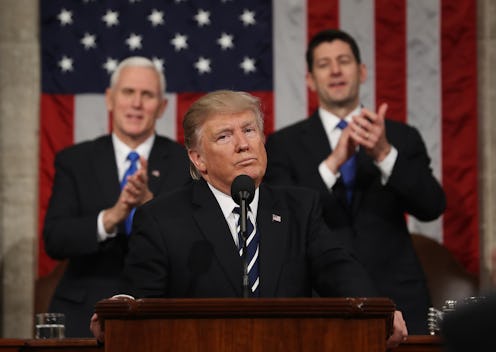
It may sound like a mysterious plot in a suspenseful thriller, but there is actually such a thing called a "designated survivor" for the U.S. president. You might be able to figure out what a designated survivor is by its name, but if you want to learn more about why it's important to choose one,and who has been a designated survivor throughout American history, here's a good place to start.
So, what is exactly a designated survivor? In the case of an unexpected disaster, illness, or a similar condition in which the president is fatally harmed during a State of the Union address or inauguration, a designated survivor temporarily replaces the president as the acting commander-in-chief. Although the name isn't made public instantly, this person is most likely a cabinet member of the United States government. Like a tightly-kept secret, this particular person is not made known to the public until shortly before the president's speech begins.
Why so much secrecy? Well, for security purposes. The anonymity granted to a designated survivor is to protect this person from being compromised in, say, an attack, or some other calamity. What's more, a designated survivor gets their very own Secret Service detail and is sent to an undisclosed location until the president's State of the Union address is over.
The reason why a designated survivor is so critical to an administration is because this person steps in when the entire House is fatally injured in a disastrous situation. In other words, the designated survivor steps in when the vice president, the House Speaker, the head of the Senate, the State Secretary, the Defense secretary, and other integral figures are attacked. The designated survivor is also given access to the nuclear war plan in case the president is attacked or wiped out.
Historically, the role was introduced during the Cold War. Public concerns over a possible nuclear strike led to the development of the designated survivor's role. But it's worth remembering that making designated survivors known to the citizens didn't happen until recently. Although the practice has been taking place for decades now, the idea of introducing designated survivors to the American public was more of a nascent development. In the 1980s, the government began introducing designated survivors to Americans before presidents would make their State of the Union speeches.
Criteria-wise, the designated survivor is required to be at least 35 years old and a natural-born citizen of the United States. Furthermore, this person has to have lived at least 14 years in the country. Some names of past designated survivors in the United States include Secretary of Energy Steve Chu in 2013, Interior Secretary Dirk Kempthorne in 2008, Commerce Secretary Donald Evans in 2004, and more.
While the idea of a designated survivor seems intense and possibly paranoid given the concern over possible terror attacks, former Veteran Affairs Secretary Jim Nicholson told NBC News that it's a pragmatic and necessary practice. "One part of it seems totally unrealistic. Then there's a certain realism that sets in and you have to take it seriously," Nicholson said.
From the history of appointing a designated survivor, the purpose of selecting, the criteria that goes into appointing one for the present president to maintaining secrecy around the individual, you could call it the back-up plan for every government. At this moment, there are no official reports of Trump's designated survivor for his Tuesday night State of the Union address. But in January 2017 during Trump's inauguration, his designated survivor was Veteran Affairs Secretary David Shulkin.
If you're interested in learning who the acting-commander-in-chief is, keep your eyes and ears open for the name of the president's designated survivor before he begins his speech.